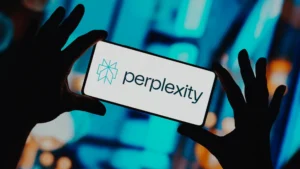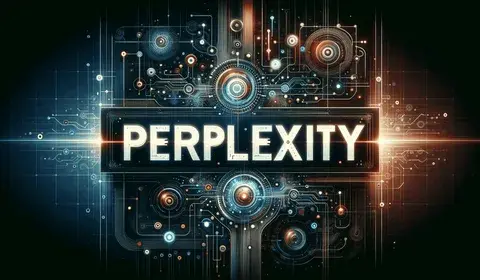Have you ever wondered how AI can handle the complexities of human language?
Or why it sometimes feels like it’s grasping at straws when responding to your queries?
These questions revolve around a key concept in, “AI and Perplexity”
In this article, we’re diving deep into what perplexity means in the realm of AI, how it impacts language models, and why it matters to you “AI and Perplexity”
What is Perplexity in AI?
At its core, perplexity is a measurement of how well a probability distribution predicts a sample.
In simpler terms, it’s a way to quantify how “surprised” a language model is when it encounters new data.
If a model has low perplexity, it means it’s doing a good job of predicting text sequences.
A high perplexity indicates confusion or uncertainty, which can lead to less coherent responses.
Why Should You Care?
Understanding perplexity helps you appreciate the strengths and weaknesses of AI-generated text. “AI and Perplexity”
Predictability: Lower perplexity means the AI is more predictable and reliable.
Creativity: Higher perplexity can lead to creative, but sometimes nonsensical outputs.
Application: Knowing how perplexity works can help you choose the right AI tools for your needs.
The Role of Perplexity in Language Models

Language models, like GPT-3, use perplexity as a key performance indicator.
When training these models, the goal is to minimize perplexity.
This means they’re getting better at understanding and generating human-like text.
How is Perplexity Measured?
Perplexity is calculated using the formula:
\ [ \text {Perplexity}(P) = 2^{H(P)} \]
Where \(H(P) \) is the entropy of the probability distribution.
This can sound complex, but think of it like this:
If you have a straightforward text, the perplexity will be low.
If you’re working with complex or unpredictable language, the perplexity will spike. “AI and Perplexity”
The Impact of Perplexity on User Experience
As someone who interacts with AI, understanding perplexity can improve your experience.
Tips for Better Interaction:
Be Specific: Clear and detailed questions lower perplexity and lead to better responses.
Adjust Expectations: Recognize that AI might falter with ambiguous or overly complex queries.
Iterate: If the AI doesn’t get it right the first time, rephrase your question.
By keeping these tips in mind, you can help reduce the perplexity of AI, ensuring smoother interactions.
The Balance Between Creativity and Coherence
One of the fascinating aspects of AI is its ability to generate creative content.
But how does this relate to perplexity?
High Perplexity Can Spark Creativity
When a model operates at a higher perplexity, it’s more likely to produce unexpected or novel outputs.
This can be a double-edged sword:
Pros: Unique ideas, fresh perspectives.
Cons: Potentially irrelevant or confusing content.
Finding the Sweet Spot
The key is to strike a balance between creativity and coherence.
Low Perplexity: Ideal for structured, factual writing (like reports).
High Perplexity: Great for brainstorming or creative writing tasks.
Real-World Examples of Perplexity in Action
Let’s look at some real-world scenarios where perplexity plays a crucial role.
1. Chatbots
When you interact with a customer service chatbot, its responses are influenced by perplexity.
A well-trained bot with low perplexity can handle standard queries effectively.
2. Content Creation
If you’re using AI for blog posts or social media, adjusting perplexity can yield different styles of writing. “AI and Perplexity”
For example, a higher perplexity setting may result in a more conversational tone, while a lower one yields more structured content.
3. Language Translation
In translation apps, perplexity helps gauge how accurately the AI can convert phrases from one language to another.
Lower perplexity means better translation quality.
Frequently Asked Questions About AI and Perplexity
What Does Low Perplexity Mean?
Low perplexity means the AI is good at predicting text sequences, leading to coherent and relevant responses.
How Can I Reduce Perplexity in My Interactions?
To reduce perplexity, be specific and clear in your questions. This helps the AI understand your intent better.
Is High Perplexity Always Bad?
Not necessarily. High perplexity can lead to creative outputs, but it may also result in less coherent responses.
How Does Perplexity Affect AI Training?
“AI and Perplexity”
During AI training, minimizing perplexity is crucial. It indicates that the model is learning to better understand human language.
Can I Measure Perplexity Myself?
While you can’t measure perplexity directly without specific algorithms, you can assess it qualitatively by evaluating the coherence of the AI’s responses.
The Future of AI and Perplexity
As AI continues to evolve, understanding and managing perplexity will be vital.
Improvements in language models will lead to lower perplexity, resulting in more accurate and relatable outputs. “AI and Perplexity”
Innovations on the Horizon
Better Training Data: The future will see models trained on more diverse datasets to lower perplexity across various contexts.
User Feedback Integration: Incorporating user feedback in real-time will allow models to adapt and improve their responses, effectively lowering perplexity.
Wrapping Up
“AI and Perplexity”
Understanding AI and perplexity is key to maximizing your interactions with technology.
Whether you’re a casual user or a business professional, grasping this concept helps you engage with AI more effectively.
So, the next time you chat with an AI, remember perplexity isn’t just a tech term; it’s a window into how well that AI understands you.
By keeping your queries clear and direct, you’ll not only reduce perplexity but also enhance the quality of your interactions.
Let’s continue exploring the fascinating world of AI together.
You’ll find that the more you understand concepts like perplexity, the more empowered you’ll feel when using AI tools.
After all, in the realm of artificial intelligence, knowledge is power.
Read More: https://aitrendstoday.site/

